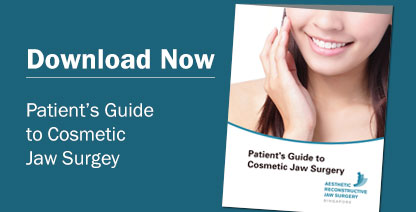Share this
A little bit of orthognathic surgery but not too much
on June 6, 2017

It is quite common in my practice to have patients coming in to ask for jaw surgery to correct what they feel are minor deformities. They often say that they are not seeking major changes and only want a bit of surgery but not too much. Every often, such requests are harder to fulfill than requests for extreme makeovers. Jaw surgery can achieve dramatic changes in facial appearance especially in cases of gross discrepancies of facial bone proportions and symmetry. However, for the patient who says she does not want major changes, is orthognathic surgery suitable?
What is a minor deformity?
Some deformities are so obvious that everyone notices. However, some are rather difficult to pinpoint. It may be a mild asymmetry that is not noticeable without careful observation, or it may be a gummy smile that the patient has habitually covered up with subconscious contraction of the lip muscles. Such deformities that are not immediately apparent requires careful discussion with the patient to understand what is primary motivation for seeking surgery.
Nature of corrective jaw surgery
Corrective jaw surgery is primarily repositioning of facial bones. In order to reposition the bones, they need to be detached from the connecting bones and placed in a pre-planned position that will give better function and aesthetics. As such, whether the detached jaw bone needs to be repositioned 5mm or 10mm away, the jaw needs to be cut the same way. The only difference is in the degree of movement.
Minor changes with corrective jaw surgery
What about discrepancies that need less than 5mm of repositioning? These minor cases are best treated with alternatives that are less invasive. Jaw surgery changes facial appearance by shifting the underlying bone to effect a change in the appearance of the facial skin and muscles. As the attachment of the soft tissues to bone is not rigid, movement of the bone is not exactly duplicated onto the skin. For example, repositioning the upper jaw vertically by 5mm does not always create a 5mm reduction in a gummy smile. This is because the soft tissue “absorbs” part of the movement. As such, as a general rule, orthognathic surgery is best used to correct deformities that require at least a 5mm repositioning of the jaw.
Alternatives
Facial asymmetry is one of the most challenging deformities to correct because everyone is asymmetrical to a certain extent. To a patient who is bothered by a relatively mild asymmetry, corrective jaw surgery may not be the best option. Camouflage treatment such as one-sided botox injections to a thicker masseter muscle or injection of dermal fillers can improve the symmetry without any surgery. For more obvious asymmetry, insertion of facial implants such as chin or malar implants may achieve better results.
A mild underbite, whereby the lower jaw is mildly protruding, is also challenging to correct. Functional correction can be achieved with camouflage orthodontics but to achieve a facial aesthetic improvement, surgery is needed. Similarly, a mild overbite also can be camouflaged with orthodontics without surgery. The question is whether that fulfills the patient’s treatment goals.
Facial bone re-contouring is another alternative to orthognathic surgery for mild deformities. Instead of repositioning the bone, re-contouring of bone changes the facial appearance directly. This can only apply to parts of the bone that are most superficial and not covered by a thick layer of soft tissue. Thick soft tissue masks the effects of re-contouring and the results may not be as apparent as expected.
Perception vs Reality
However, some patients may have significant deformities that they perceive as minor. For these patients, the camouflage alternatives are not suitable. The treatment plan must be driven by the diagnosis which encompasses the treatment objectives of the patient. It is natural for a patient to desire a less invasive procedure but a non-invasive procedure that does not achieve the treatment objective is more invasive than not having any procedure done at all.
As with all surgeries, jaw surgery must be driven by the diagnosis. Unlike the surgeries for diseases whereby the eradication of the diseased body part is the primary objective, corrective jaw surgery has a cosmetic component. The cosmetic outcome desired by the patient forms part of the diagnosis and the choice of surgery must be one that best achieve the goals, be it an invasive procedure like orthognathic surgery, or a non-invasive one like orthodontic treatment.
Share this
- Jaw Surgery (93)
- Dental Implants Singapore (90)
- Orthognathic Surgery (48)
- Replacing Missing Teeth (26)
- Missing Teeth Options (23)
- Underbite (23)
- Bone Grafting (21)
- Costs (18)
- Facial Aesthetics (18)
- Aesthetics (17)
- dental implants (16)
- corrective jaw surgery (15)
- BOTOX (11)
- Dermal Fillers (11)
- Wisdom teeth (10)
- Fixed Implant Dentures (8)
- Loose Dentures Singapore (6)
- Medisave (6)
- sleep apnea (6)
- Braces (5)
- Dental Pain (5)
- Dentures in Singapore (5)
- Loose Teeth (5)
- Tooth Extraction (5)
- jaw deformities (5)
- bimax (4)
- bone graft (4)
- maxillomandibular advancement (4)
- all-on-4 (3)
- bimaxillary protrusion (3)
- chin implant (3)
- facial asymmetry (3)
- full mouth dental implants (3)
- genioplasty (3)
- immediate implant (3)
- removal of an integrated dental implant (3)
- third molars (3)
- wisdom tooth surgery (3)
- My Dentures Don't Fit (2)
- VME (2)
- bone graft healing (2)
- distraction osteogenesis (2)
- medical tourism (2)
- obstructive sleep apnea (2)
- orthodontics (2)
- plastic surgery (2)
- CT guided dental implants (1)
- Double jaw surgery (1)
- Invisalign (1)
- Periodontal Disease (1)
- Permanent Dentures Singapore (1)
- before and after photos (1)
- facial trauma (1)
- fractured dental implant (1)
- oral appliance therapy (1)
- root canal treatment (1)
- veneers (1)
- vertical maxillary excess (1)
- September 2019 (2)
- July 2019 (2)
- May 2019 (2)
- August 2018 (1)
- October 2017 (1)
- September 2017 (2)
- August 2017 (1)
- June 2017 (2)
- May 2017 (4)
- April 2017 (1)
- March 2017 (1)
- February 2017 (3)
- January 2017 (3)
- December 2016 (1)
- November 2016 (2)
- October 2016 (4)
- September 2016 (9)
- August 2016 (5)
- July 2016 (11)
- June 2016 (14)
- May 2016 (6)
- April 2016 (2)
- March 2016 (1)
- January 2016 (7)
- December 2015 (10)
- November 2015 (4)
- October 2015 (9)
- September 2015 (7)
- August 2015 (1)
- July 2015 (6)
- June 2015 (3)
- May 2015 (7)
- April 2015 (5)
- March 2015 (8)
- January 2015 (5)
- December 2014 (7)
- November 2014 (7)
- October 2014 (6)
- September 2014 (8)
- August 2014 (5)
- July 2014 (7)
- June 2014 (8)
- May 2014 (9)
- April 2014 (10)
- March 2014 (6)
- February 2014 (8)
- January 2014 (3)
Subscribe by email
Email subscription




No Comments Yet
Let us know what you think